While we’ve come a long way from the first-ever HDD storing a mere 5 MB back in 1956 to contemporary SSDs capable of storing hundreds of TB, the challenge of constantly running out of space persists. As storage capacities expand, the size of files grows proportionally, underscoring the importance of knowing how to find and manage these larger files.
In this article, we’ll explore how to search for large files in Windows 10, equipping you with the tools to effectively manage your PC storage. Additionally, you’ll learn how to clean computer files, ensuring optimal organization and performance of your Windows 10 system.
How to Search for Large Files in Windows 10
When it comes to managing storage, understanding how to find big files on a PC is crucial. Here, we’ll explore multiple methods and explain how to find large files on Windows 10 PCs.
Using Auslogics BoostSpeed
Auslogics BoostSpeed proves to be an invaluable ally in the quest to manage your PC’s performance, offering a suite of features tailored for comprehensive system optimization.
From decluttering your system by removing junk files to eliminating duplicates, uninstalling unnecessary applications, and boosting disk performance, Auslogics BoostSpeed serves as a multifaceted solution.
Its user-friendly interface ensures that those wondering how to find big files on a PC and how to clean computer files can effortlessly employ the app’s features, which makes it an indispensable tool for users seeking improved file management and overall system enhancement.
Here’s how to find the largest files on your PC using this powerful tool:
- Download and install Auslogics Boostspeed.

- Open the app.
- Navigate to the “Tools” section in the header, then find “Info Tools,” and select “Disk Explorer.”
- Initiate the scan by pressing Scan Now to start searching for the largest directories and files.
- Explore the results and manage your files and folders. You can sort the largest ones by actual size or by the percentage of space they occupy.
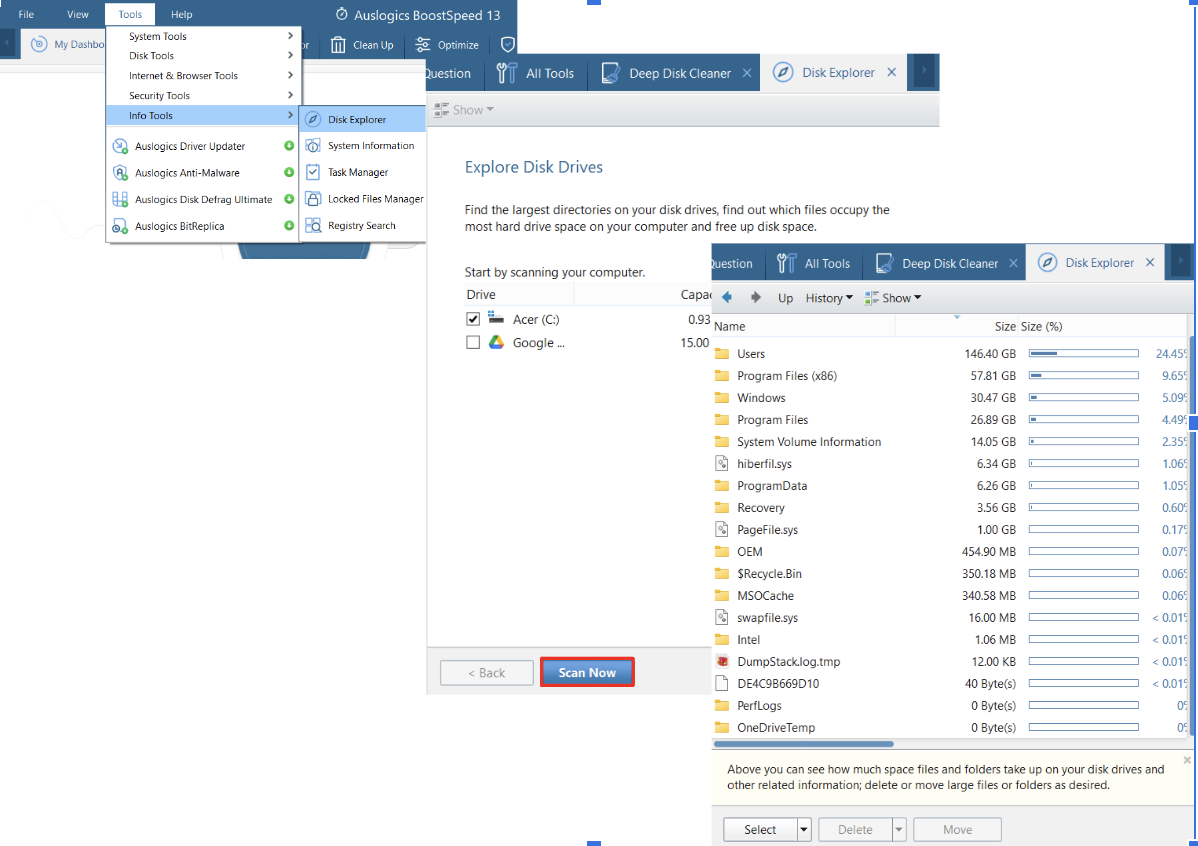
Also read: Get the Most Out of Auslogics BoostSpeed Free Trial
Using Windows File Explorer
File Explorer is a native Windows tool, and its capabilities are worth exploring. It’s a convenient way to search for large files in Windows 10 with an option to sort files by their size. Here’s how to find the biggest files on your PC in File Explorer:
- Launch File Explorer by pressing Win + E.
- Click on “This PC” in the left-side panel.
- Type the asterisk (*) in the search bar and press Enter.
- Utilize the Size button to refine your search for large (128 MB – 1 GB), huge (1 – 4 GB), or gigantic (>4 GB) files.
- Switch to the Details layout under the View tab for a clearer perspective.
- Sort files by size by clicking on the Size header.
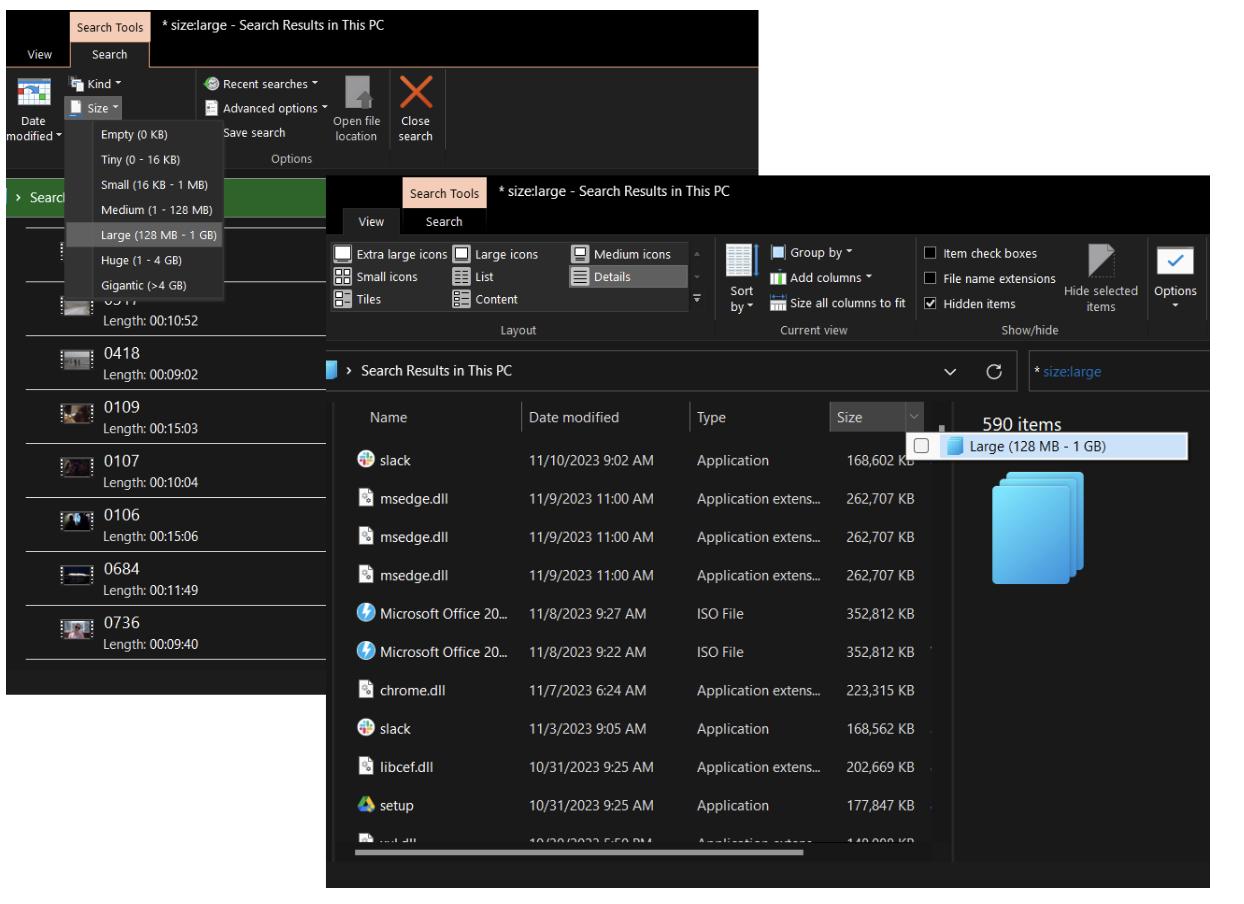
Using Windows Search
Although Windows Search doesn’t directly provide a feature to sort files by size or automatically search for large files in Windows 10, there’s still a workaround to achieve it. Here’s how to find large files on a Windows 10 PC using the Windows search bar:
- Open Windows Search by pressing the magnifying glass icon.
- Type “size: >” to use the size filter for searching, for example “size: >100 MB” to find files larger than 100 megabytes.
- Select “Documents” or “Photos” and press Enter to show documents or photos larger than 100 MB on your PC.
- Review and manage the results in File Explorer.
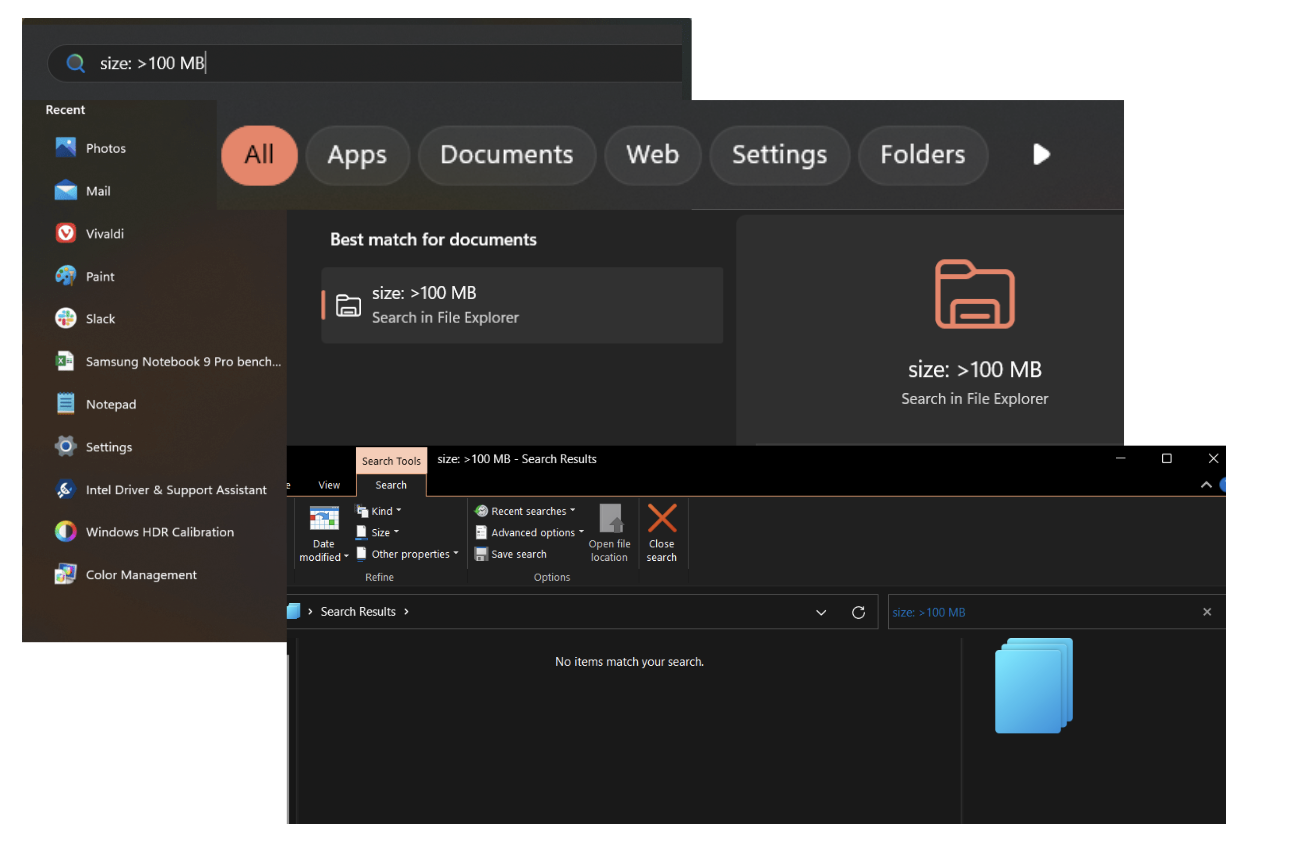
Using Command Prompt
Command Prompt offers a robust solution for the command-line enthusiasts wondering how to see the largest files on a PC as well as how to find large folders on Windows 10. Here’s how to do it:
Finding large files:
- Press Win + S, type “Command Prompt,” and select “Run as administrator” on the right-hand side.
- Use the “cd” command to navigate to the drive or folder where you want to search for large files. For example:
cd C:\Users
- Find and display files larger than a specified size by using the following command:
forfiles /S /M * /C “cmd /c if @fsize GEQ <size> echo @path”
Replace <size> with the actual size in bytes. For example, to find files that exceed 100 MB:
forfiles /S /M * /C “cmd /c if @fsize GEQ 104857600 echo @path”
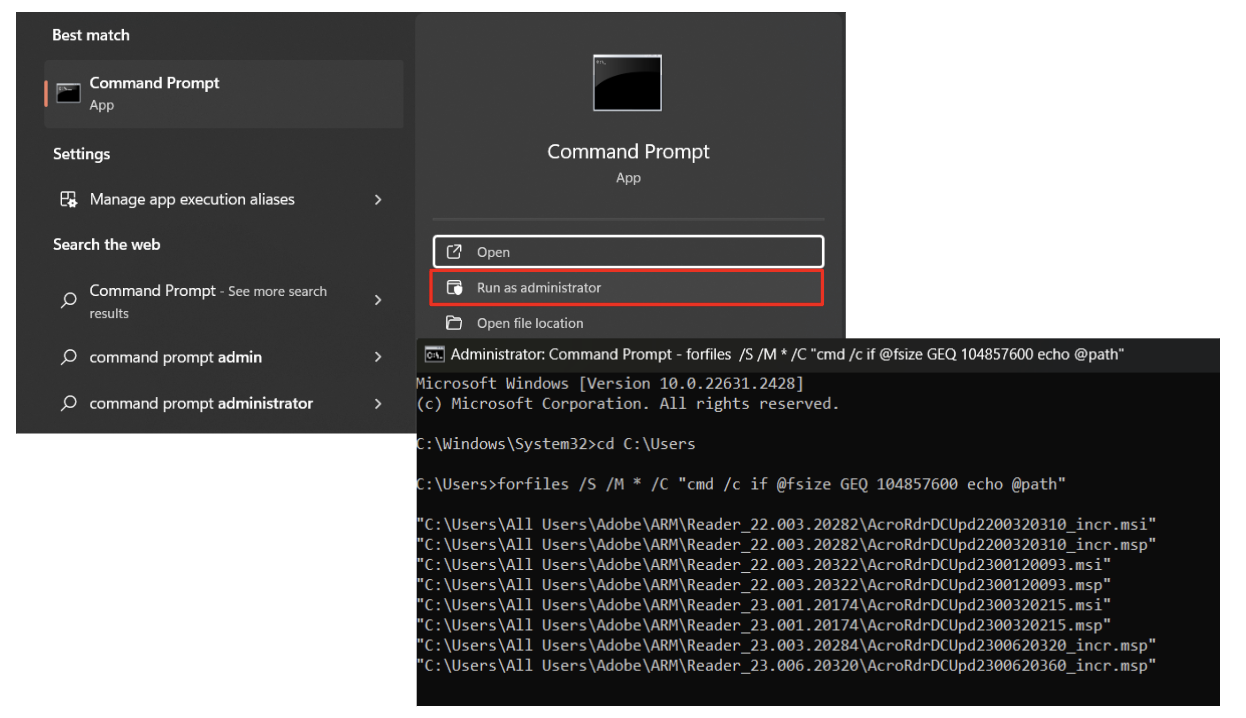
The command will display the paths of files that meet the size criteria.
Finding large folders:
- Press Win + S, type “Command Prompt,” and select “Run as administrator” on the right-hand side.
- Use the “cd” command to navigate to the drive or folder where you want to search for large files. For example:
cd C:\Program Files (x86)\Google
- Use the following “dir” command to show folders by size in descending order (largest folders first):
- dir /S /O:-S
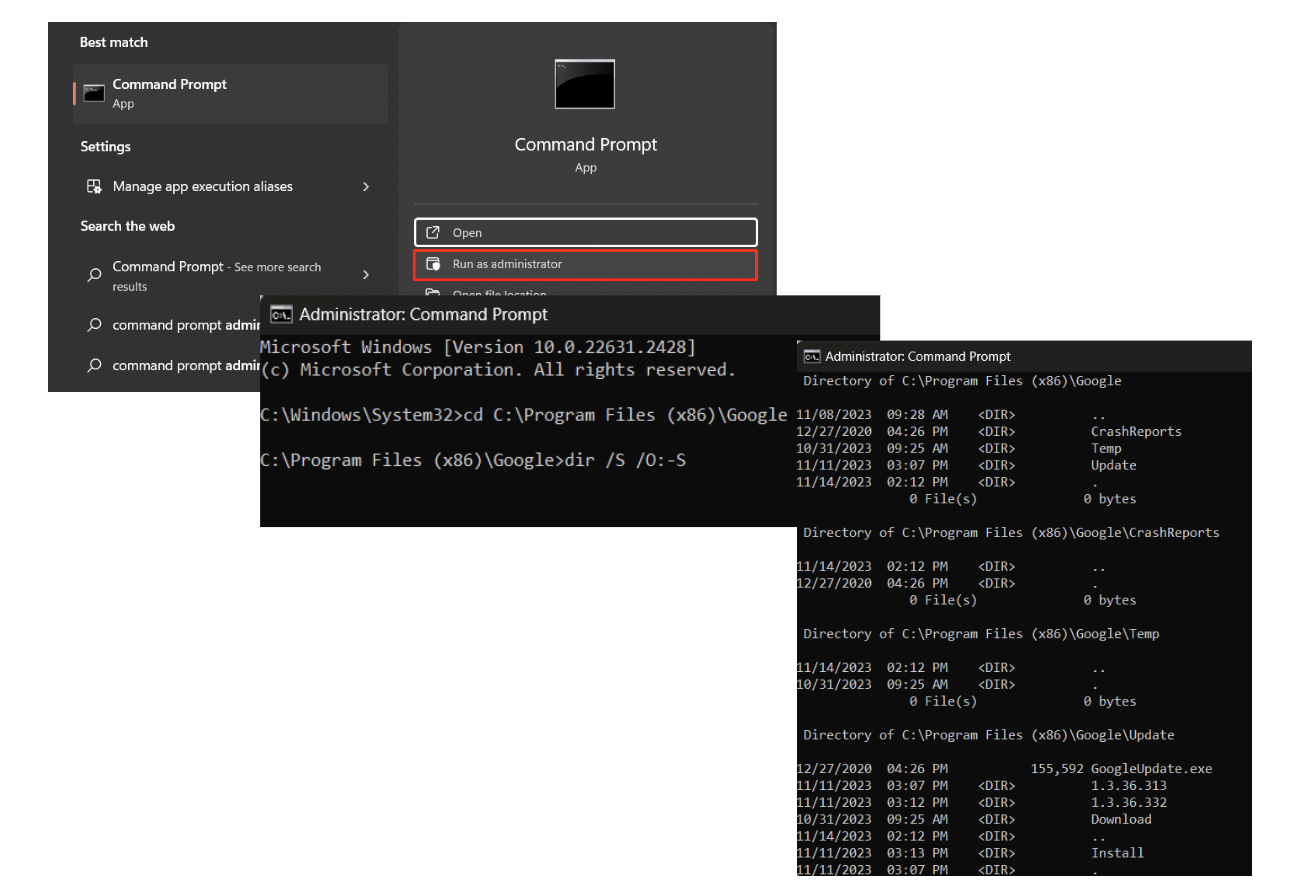
The command will display the paths of the folders and their size in bytes.
Also read: 28 Most Useful Command Prompt Commands
Find Hidden Files on Your PC
Now that you know how to search for large files in Windows 10, it’s important to consider hidden files that may not be immediately visible. If, after following the previous steps, you still can’t locate certain large files, they might be hidden. Here’s a brief guide on how to reveal such files:
- Launch File Explorer using Win + E.
- Click on the “View” tab in the top menu.
- In the “Show/hide” group, check the “Hidden items” box.
- Return to your search results or repeat the steps to locate large files. Hidden files will now be visible.
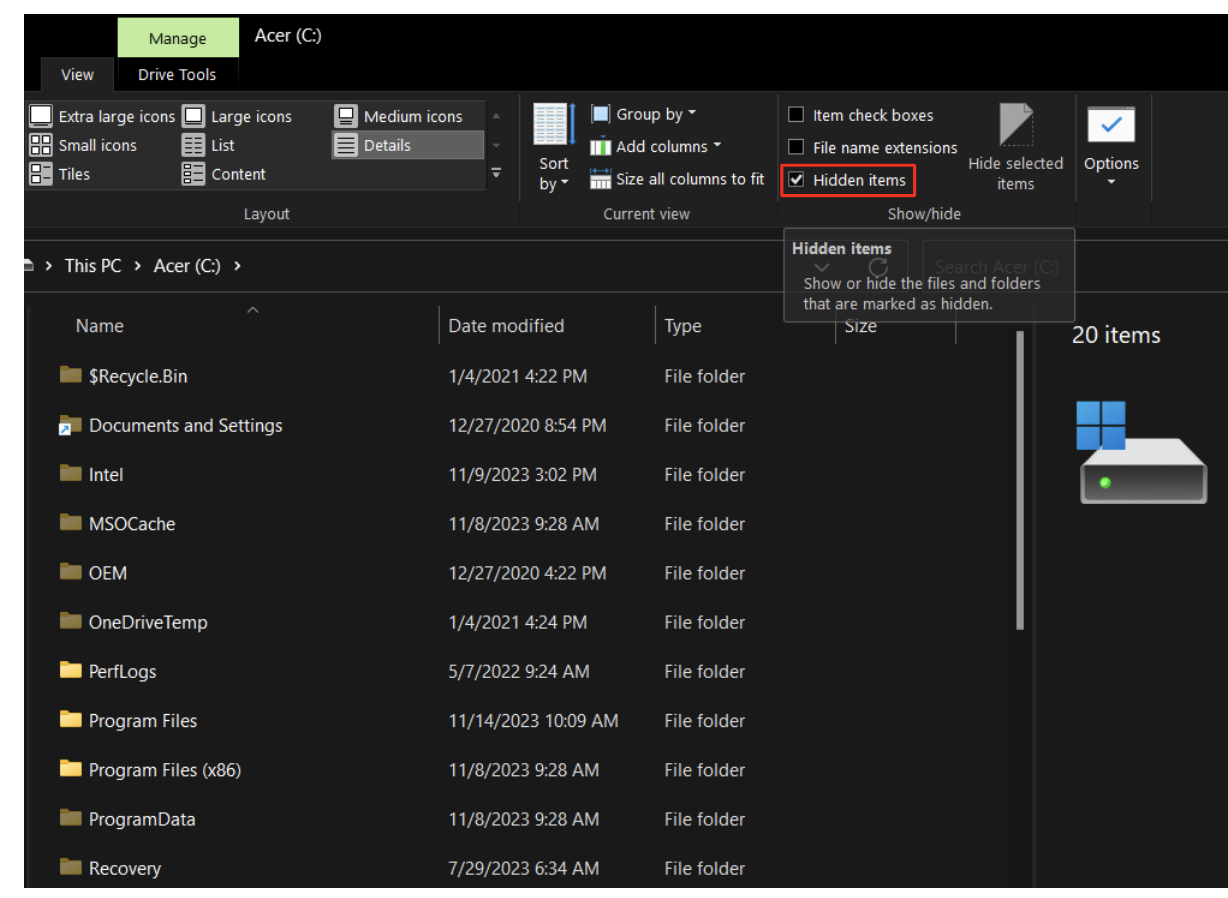
Knowing how to reveal hidden files is essential to fully understand how to find large files on Windows 10.
Managing And Deleting Large Files
Effectively managing your storage space is as crucial as mastering the skills to identify large files. Since we’ve already taught you how to see the biggest files on your Windows 10 PC, let’s now explore how to clean computer files by leveraging various tools and strategies.
Using Auslogics BoostSpeed
Once again, let’s turn to Auslogics BoostSpeed as a simple solution for seamless file management. For detailed instructions on deleting large files in Auslogics BoostSpeed, you can refer to the initial section of this article.
Additionally, Auslogics BoostSpeed provides various tools to efficiently declutter your PC, including Deep Disk Cleaner to delete junk files, Duplicate File Finder to remove duplicates, and Uninstall Manager to get rid of unneeded applications.

Employing these features ensures a holistic approach to freeing up substantial storage space, enhancing the overall performance of your Windows 10 system.
Also read: Speed Up Slow Computer with Auslogics BoostSpeed 13
Utilizing Disk Cleanup
While not completely safe, according to users, another method is to utilize Windows Disk Cleanup, a built-in tool for decluttering:
- Type “Disk Cleanup” in the Windows search bar and hit Enter.
- Select the drive you want to clean.
- Review the list and delete unnecessary large files.
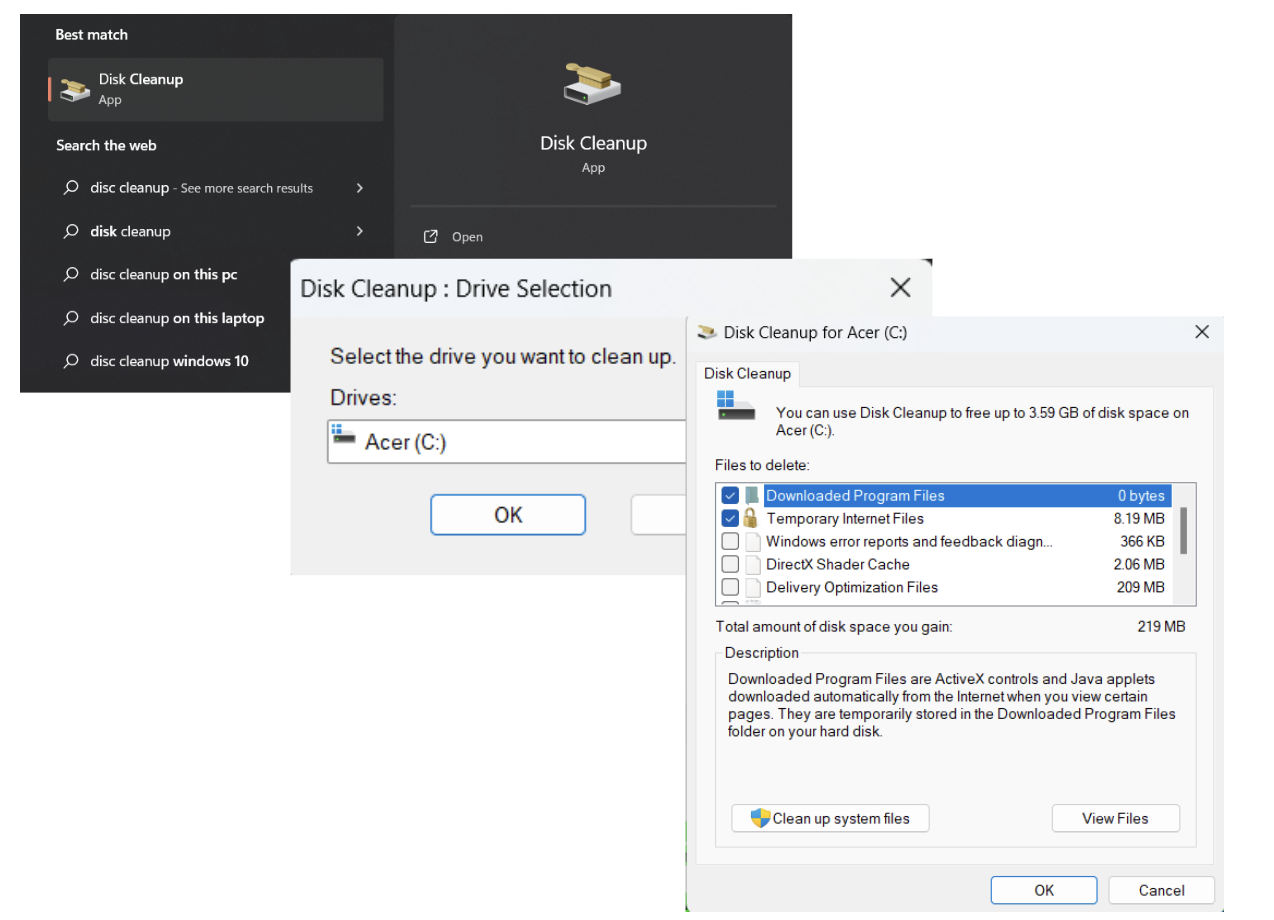
Moving Large Files to External Storage
Consider moving large files to external storage as it is a safe and easy way to free up space on your PC. Simply identify these files using the methods discussed and transfer them to your external device.
Also read: How to Fix 0x800703EE Error When Copying to External Storage
Conclusion
In this article we’ve explored strategies on how to find big files on a PC, employing tools like Auslogics BoostSpeed, and effective ways of managing and cleaning large files. Stick to our recommendations to ensure optimal organization of your digital space and enhance your Windows 10 system overall performance.
FAQ
How to Find Duplicate Files on a Windows 10 PC?
To identify duplicate files on your Windows 10 PC consider leveraging Auslogics Duplicate File Finder. While manual methods, such as using Windows File Explorer, exist, this specialized tool in Auslogics BoostSpeed streamlines the process, offering an automated and more efficient approach.
How to Find And Delete Empty Folders?
For an efficient approach in locating and deleting empty folders on Windows 10, we recommend the Empty Folder Cleaner tool within Auslogics BoostSpeed. While manual deletion through Windows File Explorer is an option, this tool simplifies the process by automating and facilitating bulk deletion of empty folders.
How to Empty the Recycle Bin in Windows 10?
To free up space on your Windows 10 PC, right-click on the Recycle Bin icon and select “Empty Recycle Bin.” Confirm the action to permanently remove deleted files.



![[EASY GUIDE] How to Find and Clean Large Files on Your Windows 10 PC](https://www.auslogics.com/en/articles/wp-content/uploads/2023/11/shutterstock_2043347954-1-scaled.jpg)